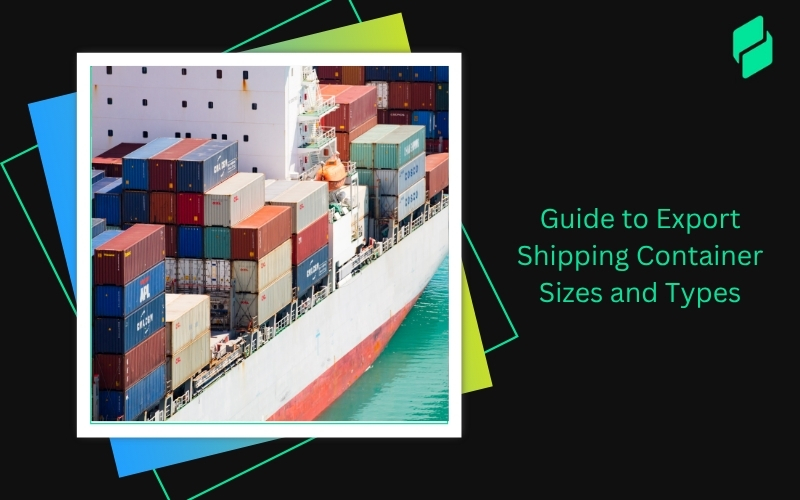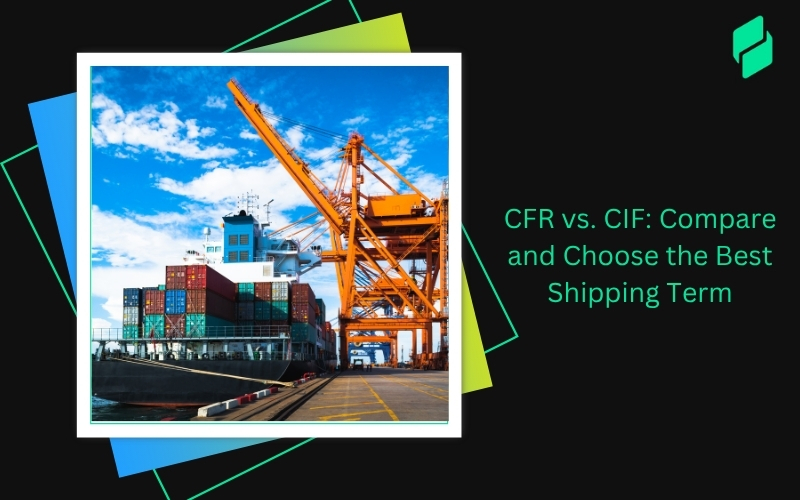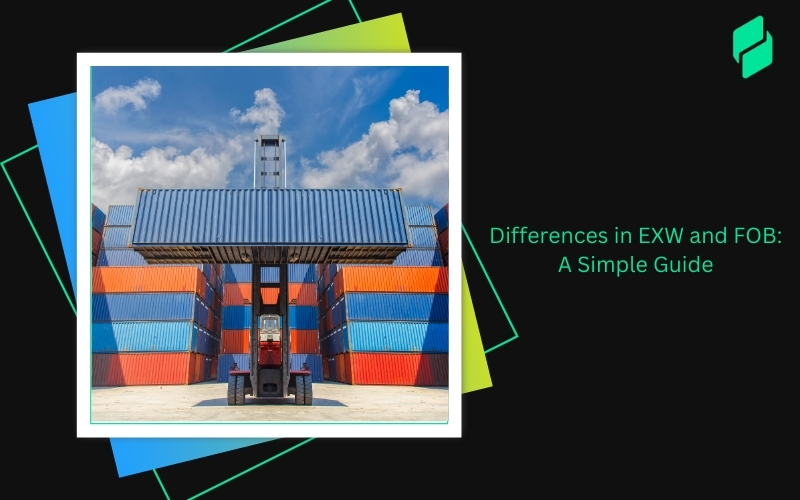Optimize your business: use unlimited savings with Pazago fulfilled now!
Get Started ->Did you know about 90% of global trade is carried over the sea? With such a vast volume of goods in transit, the risks of damages, accidents, or unexpected events are inevitable. This is where understanding marine losses becomes crucial.
Marine losses refer to the damages or financial losses experienced while transporting goods across the ocean, inland waters, or land as part of import-export operations.
The Importance of Quantifying Marine Losses
By understanding and quantifying marine losses, you can make more informed decisions about marine insurance policies and protect your investments.
As an importer or exporter, your ability to handle these risks efficiently ensures that you can maintain a steady flow of goods uninterrupted by unexpected financial setbacks.
This is especially true for businesses involved in freight forwarding or those that rely heavily on supply chain management to ensure timely product delivery.
Types of Marine Losses: Total Loss and Partial Loss

Marine losses can be broadly categorized into two main categories: Total Loss and Partial Loss.
1. Total Loss in Marine Insurance
Imagine your shipment is traveling across the ocean, and suddenly, a disaster strikes—your goods are destroyed beyond repair, or worse, the vessel carrying them vanishes without a trace. This is a prime example of a Total Loss in marine insurance, where insured goods lose 100% or nearly 100% of their value.
The significance? Experiencing a total loss can be financially devastating for businesses involved in import and export.
This is why having comprehensive marine insurance is vital—it ensures you're covered when the unexpected happens, allowing you to claim compensation through your insurance claim letter for reimbursement and safeguarding your business from crippling losses.
Types of Total Loss: Actual and Constructive
Total Loss can be divided into two main categories: Actual Total Loss and Constructive Total Loss.
a) Actual Total Loss
This occurs when the goods are destroyed or are lost beyond any chance of recovery. Think of it as a scenario where your cargo is either physically obliterated or has disappeared entirely, with no hope of being retrieved.
Examples:
- Fire Damage: If your goods are destroyed by fire during transit, resulting in destruction, it qualifies as an actual total loss.
- Missing Vessel: When a vessel carrying your shipment goes missing, and there’s no reasonable chance of recovery, it falls under actual total loss.
Why It Matters: In such situations, the insurer typically pays the full insured amount under your marine cargo insurance. Exporters and importers are protected from losing their entire investment.
b) Constructive Total Loss
This happens when the goods or vessels are so severely damaged that the cost of repairs exceeds their total value. Unlike actual total loss, you still possess the goods here, but repairing or recovering them would be impractical or financially unviable.
Examples:
- Pirate Abduction: Imagine your vessel gets hijacked, and the repair or ransom costs after the ordeal exceed the value of your cargo. This would be considered a constructive total loss.
- Severe Storm Damage: If your goods are severely damaged in a storm, and the cost of retrieving and repairing them outweighs their actual value, you’d be looking at a constructive total loss.
Why It Matters: Recognizing a constructive total loss ensures you can claim the insured amount instead of spending more on repairs. It helps you avoid further financial strain, making your marine insurance policy worth the investment.
Also Read: Definition and Meaning of Cargo Insurance Certificate in Shipping Terms
2. Partial Loss in Marine Insurance
Ever received a shipment where some goods were damaged while others arrived intact? This situation exemplifies a Partial Loss in marine insurance.
Unlike a total loss, a partial loss involves damage to only a portion of the insured goods, affecting their overall value but not resulting in destruction.
For businesses engaged in import and export, understanding partial loss is crucial for accurately assessing the value of damaged goods and ensuring adequate compensation through marine cargo insurance.
This ensures minimal financial impact, allowing you to maintain seamless operations in your supply chain management.
Types of Partial Loss: Particular Partial Loss and General Average Loss
Partial losses can be categorised into Particular Partial Losses and General Average Losses.
a) Particular Partial Loss
This occurs when only a specific part of the consignment is damaged or lost during transit. This could mean some goods arrive damaged while the rest remain unaffected.
In such cases, the insurer calculates the depreciated value of the damaged goods upon arrival to determine compensation under the marine insurance policy.
Example:
- If you’re importing electronics and some units are damaged during shipping while the rest are intact, this is a particular partial loss. You can claim the depreciated value of the damaged goods through your insurance claim letter for reimbursement.
Tip: Always conduct a shipment inspection upon receiving your goods to identify any damages and initiate the claims process promptly.
b) General Average Loss
This partial loss occurs when intentional damage is inflicted on certain goods to avoid a greater danger. It’s a shared loss among all parties involved in the voyage, meaning every stakeholder contributes to the financial burden.
Example:
- Imagine a ship carrying chemicals encounters rough seas, and the crew throws the chemicals overboard to prevent contamination. The loss incurred here is classified as a general average loss, and all parties, including you as the importer or exporter, would share the cost.
Why It Matters: Being aware of this type of loss helps you prepare for unexpected expenses as an importer or exporter. Including inland marine and ocean marine insurance coverage in your policy protects you against such situations.
Let’s break down an example to illustrate how General Average Loss works in a financial context.
Suppose a ship carrying goods from India to Dubai encounters rough seas, and the captain decides to jettison some cargo to stabilize the vessel. Here’s the breakdown:
- Ship value: ₹100 lakhs
- Cargo value: ₹200 lakhs
- Freight value: ₹40 lakhs
- Total value of all interests: ₹340 lakhs
The contribution rates are calculated as:
- Shipowner: ₹100 lakhs / ₹340 lakhs = 29.41%
- Cargo owner: ₹200 lakhs / ₹340 lakhs = 58.82%
- Freight owner: ₹40 lakhs / ₹340 lakhs = 11.77%
If the average adjuster determines the general average loss to be ₹30 lakhs, the share of the loss for each party would be:
- Shipowner: ₹30 lakhs x 29.41% = ₹8.82 lakhs
- Cargo owner: ₹30 lakhs x 58.82% = ₹17.65 lakhs
- Freight owner: ₹30 lakhs x 11.77% = ₹3.53 lakhs
In this scenario, each party contributes to the total loss based on their share of the total value. This ensures that the financial burden is distributed fairly among all stakeholders. This concept highlights the importance of comprehensive import-export insurance, which ensures protection in such situations.
Also Read: Exploring Different Types of Marine Insurance Clauses
Differences Between Total Loss and Partial Loss
Also Read: Essential Elements and Principles of Marine Insurance Contract
Marine Losses Prevention: Protecting Your Cargo on the High Seas

Effective marine loss prevention can be the difference between a smooth shipment and a costly disaster.
Let’s explore some proven strategies to keep your shipments secure and how Pazago can be your partner in this journey.
1. Implement Robust Packaging and Handling Practices
Proper packaging is the first line of defence against potential damage during transit. Using high-quality packaging materials, such as waterproof and shock-absorbent materials, minimises the risk of partial losses caused by rough handling or exposure to harsh weather.
- Tip: Always choose packaging suited to your cargo’s nature. For fragile items, consider double-boxing with bubble wrap.
- Why It Matters: Effective packaging reduces the chance of damage, ensuring your cargo is protected, even during rough seas.
Pazago Insight: By integrating efficient packaging practices with your shipping insurance, you add an extra layer of protection to your cargo, ensuring your marine insurance claims are straightforward if any incidents occur.
2. Conduct Thorough Shipment Inspections
Performing a detailed shipment inspection before your cargo sets sail can prevent potential losses. Inspect your goods for any pre-existing damage and ensure they are properly loaded to avoid shifting during transit.
- Checklist for Inspection:
- Check for any visible damages.
- Ensure goods are securely fastened.
- Verify that the cargo is properly labelled and documented.
Why It Matters: Identifying issues before shipping reduces the risk of partial losses, saving you time and money on claims.
Pazago's Role: Our platform provides tools for real-time cargo tracking so you can monitor your shipments and conduct digital inspections to ensure everything is in order.
3. Choose Reputable Carriers and Shipping Routes
Your choice of carrier and shipping route can significantly impact the safety of your cargo. Opting for reputable carriers with a track record of safe deliveries minimises the risk of marine losses, whether it’s due to weather, piracy, or handling errors.
- Tip: Research carriers thoroughly and choose those with established freight forwarding experience.
- Why It Matters: Safe carriers ensure that your goods are handled professionally, reducing the risk of both total and partial losses.
Pazago Benefit: With access to over 180+ shipping companies, Pazago helps you select the most reliable carriers, ensuring your cargo reaches its destination safely.
4. Maintain an Up-to-Date Marine Insurance Policy
Having the right marine insurance policy is crucial for preventing financial losses in case of unexpected events. Ensure your policy covers total and partial losses and other potential risks like piracy, natural disasters, and accidental damage.
- Coverage Options:
- Marine cargo insurance: Protects your goods against damage or loss during transit.
- Inland and ocean marine insurance: Offers coverage for goods transported by land and sea.
- Freight insurance: Protecting the freight forwarder or carrier against potential losses.
Pazago’s Solution: We offer a fully digital cargo insurance solution that covers all your shipping needs and ensures you’re protected against every type of marine loss.
5. Monitor Weather Conditions and Plan Ahead
Weather can be unpredictable, but by monitoring forecasts and planning your shipments accordingly, you can avoid potential losses caused by storms or rough seas.
- Tip: Use weather tracking tools to plan your shipment during calm weather periods, minimising the risk of damage.
- Why It Matters: Proactive planning reduces the chances of your cargo being damaged in transit, saving you from filing unnecessary insurance claims.
How Pazago Helps: Our platform offers real-time alerts and updates, ensuring you stay informed and can adjust your shipping plans as needed.
6. Use Technology for Real-Time Tracking and Monitoring

Leverage technology to monitor your cargo’s journey in real time. GPS tracking lets you monitor your shipment, ensuring that any deviations or issues are detected immediately.
- Benefits of Real-Time Tracking:
- Instant updates on your cargo’s location.
- Alerts for any route changes or delays.
- Early detection of potential risks, such as theft or mishandling.
Pazago’s Role: We provide advanced tracking solutions that allow you to monitor your shipments 24/7, ensuring you’re always aware of your cargo’s status.
Why Marine Loss Prevention Is Essential for Your Business
- Minimised Financial Losses: Fewer damages mean fewer claims, saving you money.
- Improved Supply Chain Efficiency: You maintain a reliable supply chain with fewer disruptions.
- Enhanced Reputation: Consistently delivering undamaged goods strengthens your brand’s reliability.
Conclusion: Manage Global Trade and Marine Losses with Pazago
In the complex world of marine insurance and types of marine losses, having a reliable partner can make all the difference. At Pazago, we understand that preventing marine losses is critical for successful global trade.
Operating in over 110+ countries, Pazago provides a seamless and efficient solution to manage your global trade.
It ensures you save 20% on costs while reducing your turnaround time (TAT) by up to 50%. Whether you’re dealing with actual total losses or partial losses or simply need effective global shipping, Pazago has you covered at every step.

Key Features of Pazago:
- Digital Trade Management: Streamline your entire trade process, from procurement to fulfillment, reducing delays and errors.
- Real-Time Cargo Tracking: Track your shipments across 180+ shipping companies and gain complete visibility into your supply chain, helping you mitigate risks associated with marine losses.
- Seamless Payment Processing: Make fast international payments with low Forex rates, ensuring your trade operations remain financially viable.
- Document Management: Securely create and manage essential trade documents, making handling marine cargo insurance claims easier.
- Proactive Planning: Receive automatic notifications to avoid delays and bottlenecks in your supply chain.
Comprehensive Cargo Insurance with Pazago:
Pazago also partners with ICICI Lombard to offer a fully digital cargo insurance solution, ensuring that your goods are protected at every stage of transit. This includes:

- Digital Insurance: Forget the paperwork—everything is handled online, providing a hassle-free experience.
- Full Coverage: Offers protection against a wide range of risks, unlike standard carrier liability, ensuring your cargo remains insured against any unexpected partial or total losses.
- Quick Claims: A seamless claims process that doesn't require proving carrier fault, giving you peace of mind in case of damages or losses.
Why Choose Pazago?
“Reliable coverage, uninterrupted trade" 🌍—that's the Pazago promise. We do more than streamline your logistics; our end-to-end digital cargo insurance offers unmatched protection for your shipments, keeping them safe and sound across the globe. 🚢
Ready to protect your valuable cargo? Explore how Pazago’s all-encompassing insurance solutions can fortify your international trade.
Choose Pazago, where safety meets seamless operations! 📈


.png)








